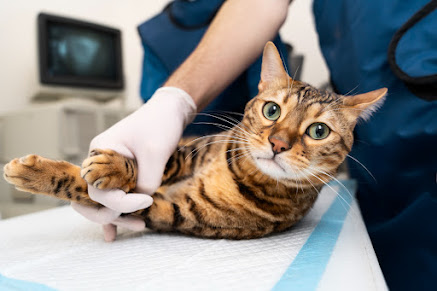How to Keep Your Dog's Skin Healthy and Prevent Hot Spots?
What is a Hot Spot?
A hot spot is a painful, inflamed skin lesion that occurs when a dog's skin is broken and bacteria are able to enter. Hot spots can appear anywhere on the body, but they are most common on the head, neck, legs, and hips.
Hot spots are often caused by self-trauma. When a dog is itchy, they may scratch or bite at the affected area, which can break the skin and allow bacteria to enter. Other causes of hot spots include allergies, parasites, and skin infections.
Symptoms of a Hot Spot:
The symptoms of a hot spot can vary depending on the severity of the lesion. However, some common symptoms include:
- A red, inflamed area of skin
- Weeping, oozing, or crusting skin
- A foul odor
- Itching or pain
Treatment for Hot Spots:
The treatment for a hot spot will depend on the severity of the lesion. However, most hot spots can be treated at home with the following steps:
1.Clean the affected area with a mild soap and water solution.
2.Apply a topical antibiotic ointment or cream.
3.Keep the affected area covered with a bandage or gauze to prevent further scratching or licking.
4.Give your dog an oral antibiotic if prescribed by your veterinarian.
In some cases, your veterinarian may need to sedate your dog to clean the affected area and apply medication. They may also prescribe a stronger antibiotic or anti-inflammatory medication.
Preventing Hot Spots:
The best way to prevent hot spots is to identify and address the underlying cause. If your dog is allergic to something, you can try to avoid that allergen. You can also keep your dog's skin clean and free of mats and dirt. If your dog has a history of hot spots, you can talk to your veterinarian about preventive medications.
Here are some tips to help prevent hot spots:
- Keep your dog's skin clean and free of mats and dirt.
- Bathe your dog regularly with a mild soap and water solution.
- Use a conditioner to help keep your dog's fur soft and manageable.
- Avoid using harsh shampoos or conditioners that can irritate your dog's skin.
- Trim your dog's hair around the areas that are prone to hot spots, such as the armpits and groin.
- If your dog has allergies, try to identify the allergen and avoid it.
- Give your dog a diet that is free of allergens.
- Talk to your veterinarian about preventive medications.
Additional Information:
- Hot spots can be a sign of a more serious underlying medical condition, so it is important to see your veterinarian if your dog has a hot spot that does not improve with treatment.
- If your dog has a history of hot spots, you may want to keep a first-aid kit on hand so that you can treat the hot spot at home as soon as possible.
- There are a number of products available that can help to prevent hot spots, such as medicated shampoos, conditioners, and sprays.
- If your dog has a hot spot, it is important to keep the area clean and dry to prevent further infection.
- You should also avoid letting your dog lick the affected area, as this can spread the infection.
Conclusion:
Hot spots are a common skin condition in dogs that can be painful and frustrating to deal with. However, with proper treatment and prevention, hot spots can be easily managed. If you think your dog may have a hot spot, it is important to see your veterinarian as soon as possible to get the proper treatment.
I hope this article has been helpful. If you have any further questions, please do not hesitate to ask.






